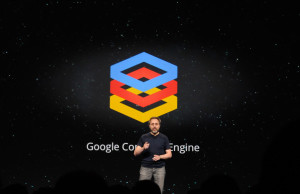 After running the service in preview mode for over a year, Google is making its IaaS (infrastructure-as-a-service) Google Compute Engine (GCE) available as a full-fledged commercial service.
After running the service in preview mode for over a year, Google is making its IaaS (infrastructure-as-a-service) Google Compute Engine (GCE) available as a full-fledged commercial service.
The company has established a service level agreement where it guarantees GCE to be available 99.95 percent of the time. It has also cut prices and increased the number of options the service offers.
GCE “Is a long-term strategic bet for the company,” said Brian Goldfarb, Google’s head of cloud platform marketing, adding “We have an incredibly high bar for what general availability means.”
Although the company has offered the Google App Engine PaaS (platform-as-a-service) since 2008, Google has been fairly late to the IaaS space. Introduced as a preview in June 2012, GCE competes with Amazon’s popular Elastic Cloud Compute (EC2) service. A number of companies already use GCE, including Snapchat, Evite and Red Hat.
GCE offers a Linux virtual machine that could be used in one or more instances to execute workloads. Like other services offered on the Google Cloud Platform, GCE runs on the same infrastructure that Google uses for its own services.
By putting the service into commercial mode, Google is offering an implicit assurance that the service will not be arbitrarily shuttered at least anytime in the near future, thus avoiding the fates of other discontinued Google projects, such as Google Reader or Google Wave.
With general availability, Google has also expanded the number of features in GCE.
Users can now run any Linux distributions, not just those preselected by Google, including those that come with optional add-on modules and their customised kernels. For instance, users can install SELinux for security enhancements, or CoreOS for running large distributed workloads.
Users could deploy a special-use file system or other deep infrastructure applications, such as the Docker app container, the FOG creator, or the xfs and aufs file systems. In preview mode, Google ran its own customised Linux kernel.
GCE has expanded the number of distributions it runs natively. It offered only versions of Debian and CoreOS while in preview mode. Now it will also offer SUSE Linux and Red Hat Enterprise (RHEL), as well as the FreeBSD Unix distribution.
The commercial offering also has a number of features to facilitate production level reliability. First, Google is minimising downtime by offering live migration of GCE jobs, meaning that when Google performs maintenance on its servers, customer workloads on those servers will be moved to other servers without an impact on performance.
The time it takes to restart an image has also been cut, according to the company.
The company has increased the number of cores that can be harnessed in one instance. Now, in limited preview, a user can run a 16-core instance with 104GB of working memory. These large images could be handy for running NoSQL databases for a Web application. Previously, users could only use 8 CPU cores in a single instance.





